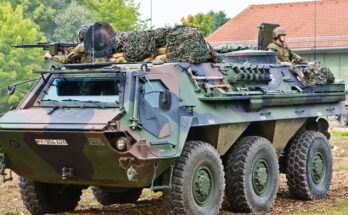by Dan Darling, International Military Markets Analyst, Forecast International.
The Indonesian Navy has announced plans to procure two new submarines from Russia as it seeks to bolster its limited submarine force. Under a plan developed in 2002-2003, the Navy intends to acquire 12 diesel-electric submarines by 2024; currently it has just two German-built Type 209 (Cakra class) boats in its fleet, both of which are slated for decommissioning around 2020.
As the largest archipelagic state in the world, the inadequacy of the Indonesian Navy’s submarine arm is alarming, particularly in light of both the maritime traffic moving near its shores and the ongoing buildup and expansionist claims of Communist China.
Indonesia’s past attempts to acquire submarines have run aground due to the financial hurdles presented. The first such attempt was a plan to acquire – then refurbish – five aging German-built Type 206 submarines. This scheme collapsed due to difficulties stemming from the global financial crisis (2008-2009). A proposal to purchase new-build Russian submarines was then stymied because of the exorbitant (by Indonesian defense-spending standards) cost.
Finally, a first step in modernizing and expanding the submarine fleet beyond the 1980s-vintage Cakra class was taken on December 20, 2011, when the Indonesian Ministry of Defense signed a $1.1 billion contract with South Korea’s Daewoo Shipbuilding and Marine Engineering (DSME) for the supply of three 400-ton Chang Bogo class diesel-electric submersibles. These submarines are based on the German HDW Type 209 design. Under the contract, DSME will build the first two subs in South Korea. Then, the tools and technology necessary for construction of the third unit will be transferred to Indonesia’s state-owned PT Pal, which will undertake production at its facilities in Surabaya, East Java. Deliveries will occur around April 2017.
Questions remain, including how fast the two new Russian submarines will be delivered and what the Indonesian Navy’s plans are beyond this acquisition, as their arrival would effectively serve as a swap for the two Cakra class boats by 2020, thus leaving the service with just five submarines. Another critical question – perhaps the critical question – is how Indonesia will finance such an acquisition at a time when the year-on-year budget is expected to decline by 6.3 percent in nominal terms in 2016.
For 50 years, Forecast International intelligence reports have been the aerospace and defense industry standard for accurate research, analysis, and projections. Our experienced analysts compile, evaluate, and present accurate data for decision makers. FI's market research reports offer concise analysis of individual programs and identify market opportunities. Each report includes a program overview, detailed statistics, recent developments and a competitive analysis, culminating in production forecasts spanning 10 or 15 years. Let our market intelligence reports be a key part of reducing uncertainties and mastering your specific market and its growth potential. Find out more at www.forecastinternational.com




